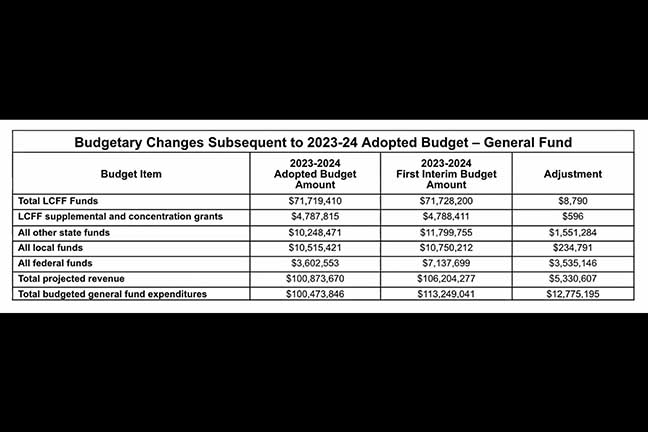CUSD releases update on accountability plan and budget
by Steven Felschundneff | steven@claremont-courier.com
By state law, Claremont Unified School District must prepare an annual update of the local control accountability plan and an associated local control funding formula budget update for parents during a regularly scheduled meeting of the Board of Education.
“A key accountability requirement of the state’s Local Control Funding Formula (LCFF), the LCAP is a three-year plan, which every district and charter school must create and update annually with input from the community,” according to EdSource. “The LCAP is intended to explain how the district will use state funds to improve educational outcomes for all students based on eight state priorities, with special attention to high-needs students for whom the district received additional money. The State Board of Education approved a template for the LCAP in January 2014.”
The eight priority areas are basic services, implementation of state standards, parent and family engagement, pupil achievement, school climate, broad course of study and pupil outcomes.
Assistant Superintendent of Educational Services Julie Olesniewicz presented an outline to this year’s LCAP during the Board of Education’s February 15 meeting, just ahead of the February 28 deadline set by the state. The update has been divided into two separate reports, the 2023-24 LCAP mid-year expenditure update and the 2023-24 metrics, which can be found in the board’s agenda for that same meeting.
“When the Claremont Unified School District adopted the LCAP and Budget on June 26, 2023, the state budget had not yet been approved,” according to a staff report. The budget overview for parents therefore reflected the “first interim report” which is the first official revision to the district’s adopted budget. The interim report also reflects carryover revenues and expenditures related to prior year allocations.

Image/courtesy of CUSD
The interim budget’s general fund revenues came in $5,330,607 higher than the adopted budget for a total of $106,204,277. However, general fund expenditures were $12,775,195 higher in the interim budget for a total of $113,248,041.
“When reporting available mid-year outcome, expenditure, and implementation data, [local education agencies] have the flexibility to provide this information as best suits the local context, provided that it is succinct and contains a level of detail that is meaningful and accessible for the LEA’s educational partners,” read the staff report.
The LCAP mid-year expenditure update “goals, actions and services implementation status” is organized around four goals which are tied to the state’s eight priorities.
“Goal 1: All CUSD students will receive instruction and have access to standards aligned materials and technology for effective implementation of the California State Standards from highly trained staff in school facilities that support student learning.
“Goal 2: CUSD will provide parents with multiple opportunities for both decision-making as well as meaningful participation in school activities, education opportunities, and strategies to support California State Standards learning at home.
“Goal 3: CUSD will provide all students with access to a rich variety of programs, course of study, and supports that increase student achievement, develop the whole child, and prepare them for career, college, and post-secondary opportunities.
“Goal 4: The district will provide students and the school community with a positive physical, emotional, social, and academic environment that promotes and motivates student engagement and supports the whole child.”
Each of the four goals is explained at length in the local control accountability plan, including several specific mid-year updates as well as the money originally budgeted and mid-year expenditure updates, if any.
In her presentation, Olesniewicz highlighted the achievements the district has made to reach the goals in the LCAP.
Under the first goal, Olesniewicz said 10 schools were rated “exemplary” in the state’s facility inspection tool reports. Almost all teachers feel comfortable with the California standards, as well as reporting that they have adequate curriculum and access to technology. The district has also increased its staff diversity.
For the second goal, 81% of parents said they have opportunities to be part of the discussions about their child’s school, while 75% reported an increase the ability to participate in parent advisor groups and/or workshops.
Goal three outcomes include an increase in the number of students enrolled in at least one International Baccalaureate or Advance Placement course, and an increase in the International Baccalaureate and Advance Placement exams administered, but a decrease in the pass rate for those exams.
There was districtwide improvement in the percentage of students demonstrating a mastery of English language arts and mathematics on the California Assessment of Student Performance and Progress assesment including among students with disabilities and English learners.
Finally, for goal area four, 88% of parents reported that the school campuses felt safe, and 93% of elementary students and 91% of secondary students said they feel safe at school. In addition, 85% of elementary students and 71% of secondary students reported that they enjoy school.
The report also notes an increase in suspensions but a decrease in chronic absenteeism.



0 Comments